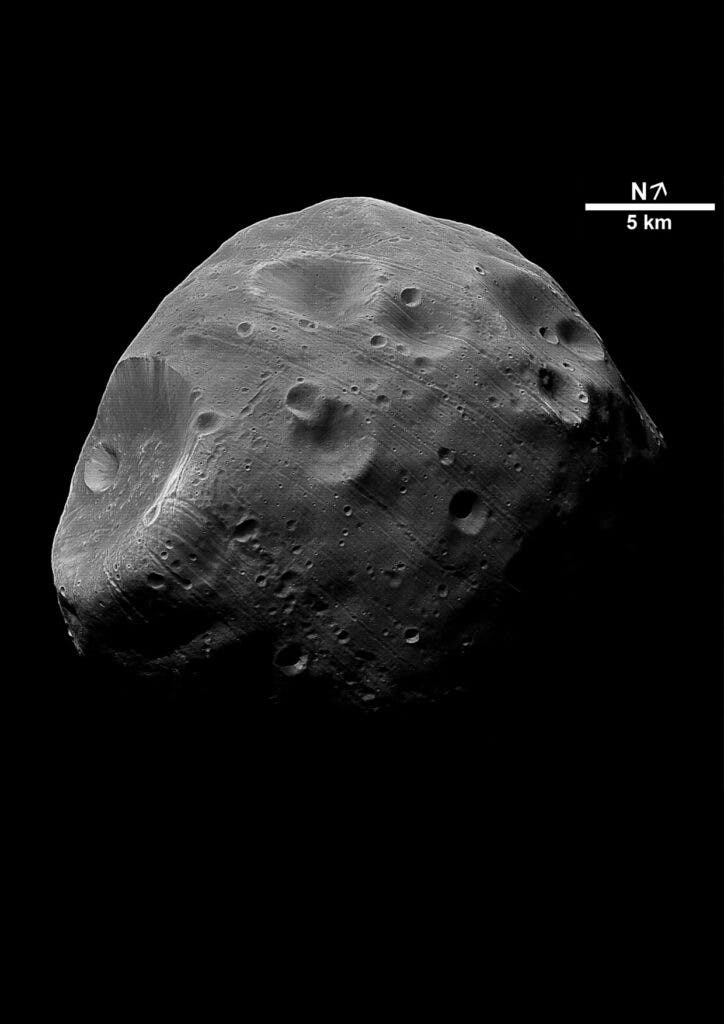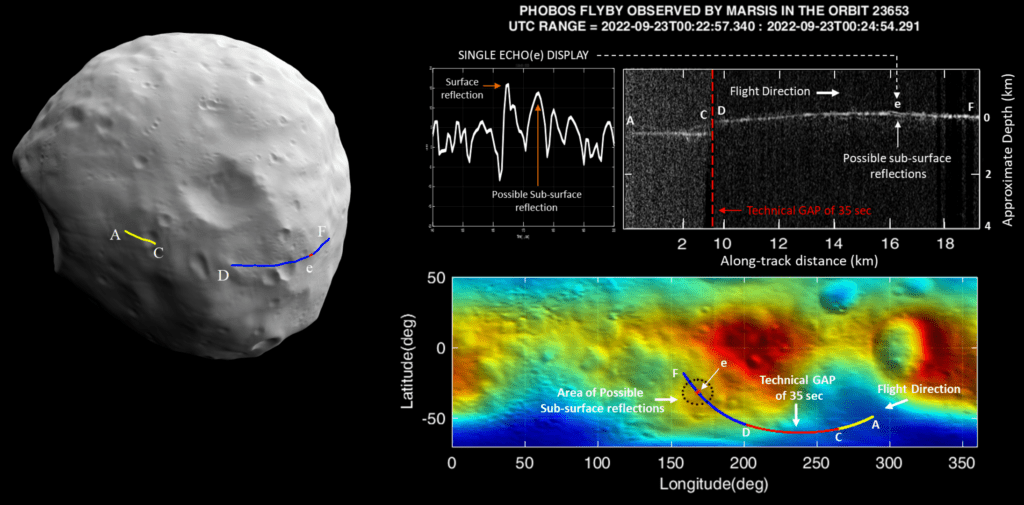Recent software updates are allowing the European Space Agency (ESA) Mars Express orbiter probe to peer under the surface of planets from orbit.

Old dogs can, in fact, learn new tricks. At least, the Mars Express orbiter can. Although it was launched back in 2003, the probe has been receiving regular software updates. Among the latest was one for its Mars Advanced Radar for Subsurface and Ionosphere Sounding (MARSIS), allowing the veteran instrument to take on new roles.
And, fitting for Halloween, MARSIS showed what it’s now capable of looking into the depths of Phobos, one of Mars’s moons, named after the Roman god of fear.
Fresh new insight
“We are still at an early stage in our analysis,” said Andrea Cicchetti, a MARSIS team member from Italy’s National Institute for Astrophysics, in a press release. “But we have already seen possible signs of previously unknown features below the moon’s surface. We are excited to see the role that MARSIS might play in finally solving the mystery surrounding Phobos’ origin.”
Phobos is one of Mars’s two tiny moons, the other one being Deimos. Although Mars was the name of a Roman god, the god of war, the moons are named after the sons of the Greek god of war, Ares, who governed over fear and terror, respectively.
Unlike our planet’s own Moon, however, both Phobos and Deimos are oddly-shaped bodies, more similar to asteroids than moons. Phobos, for example, is only 17 miles in diameter — exceedingly tiny for a moon. Their irregular shape also points to the ‘moons’ actually being asteroids captured by Mars’ gravitational well. That being said, the history of Phobos and Deimos is far from clear-cut.
“Whether Mars’ two small moons are captured asteroids or made of material ripped from Mars during a collision is an open question,” said Mars Express scientist Colin Wilson in the release. “Their appearance suggests they were asteroids, but the way they orbit Mars arguably suggests otherwise.”
That’s where MARSIS comes into the picture. The instrument was designed to study the internal structure of Mars from its orbit, at a distance of around 250 km from its surface. For this task, it came equipped with an antenna spanning an impressive 40 m (130 ft) in length. The new update allowed the instrument to calibrate for use on much shorter distances, in order to enable it to study Phobos in much better detail than what was required on Mars. This was necessary in order to allow the instrument to pick up on important details due to the moon’s tiny size compared to Mars; at longer distances, it’s very likely that the MARSIS wouldn’t have been able to distinguish any geological structure.
The orbit of Mars Express has been fine-tuned to get as close as possible to Phobos during a few flybys between 2023 and 2025 to allow ESA to scan the moon with the newly-updated sensor. Simon Wood, Mars Express flight controller at ESA’s ESOC operations center, explains that nobody even knew if what they were attempting was even possible. The final, working update, was tested and uploaded to the craft just a few hours before it flew past Phobos.
MARSIS is the same device that helped researchers find the first reliable signs of liquid water on Mars. It functions much like an ultrasound device would, but uses radio instead of sound waves. The enormous antenna of the device sends low-frequency radio waves down toward a planet. A large part of these reflect off the surface, but some pierce through and reflect from boundaries between different layers and geological structures below the surface.
The reflected waves are registered and interpreted to create a map of the subsurface structures of a planet or moon, giving us data on the shape, thickness, and likely composition of different bodies.

On the “radargram” of Phobos, taken on 23 September 2022 and pictured above, the white areas show the depth of such echoes; the brighter the point, the more powerful the echo. The continuous bright line shows the echo produced by the surface, and the lines below that show either reflections from features such as craters or the possible outlines of features below the surface.
“Section A—C was recorded using an older configuration of the MARSIS software,” says Carlo Nenna, MARSIS on-board software engineer at Enginium, who is implementing the upgrade. “The new configuration was prepared during the ‘technical gap’ and successfully used for the very first time from D—F.”
Knowing the interior structure of Phobos could help us finally understand its developmental history, and finally answer the question of whether Phobos is a moon, or a captive asteroid.
“Whether Mars’ two small moons are captured asteroids or made of material ripped from Mars during a collision is an open question,” says ESA Mars Express scientist Colin Wilson. “Their appearance suggests they were asteroids, but the way they orbit Mars arguably suggests otherwise.”
“We are still at an early stage in our analysis,” says Andrea. “But we have already seen possible signs of previously unknown features below the moon’s surface. We are excited to see the role that MARSIS might play in finally solving the mystery surrounding Phobos’ origin.”


